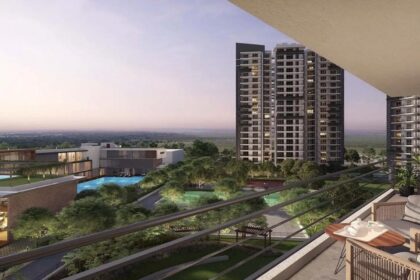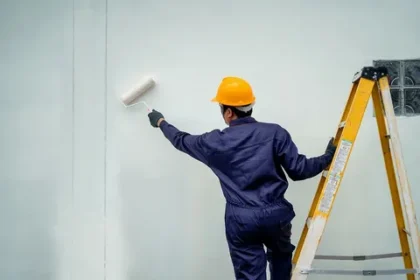When it comes to beautifying outdoor spaces, terms like landscaping and landscape gardening are often used interchangeably. At first glance, they may seem like the same thing — both involve plants, design, and outdoor aesthetics. However, there are subtle but important distinctions between the two. Whether you’re planning to revamp your backyard or simply want to understand what each service entails, this guide will clarify the differences and help you make informed decisions.
Understanding Landscaping
Landscaping is typically divided into two main categories:
-
Hard Landscaping (Hardscaping): Involves construction elements like paving, walkways, retaining walls, pergolas, outdoor kitchens, and decks.
-
Soft Landscaping (Softscaping): Deals with natural elements like turf, flowers, shrubs, trees, and soil.
Landscaping often requires a team of professionals — including landscape architects, designers, and contractors — who work together to develop a comprehensive plan. The aim is to blend functionality, aesthetics, and sustainability to create an outdoor space that complements the architecture of the home or commercial building.
Key Aspects of Landscaping:
-
Site analysis and design
-
Grading and drainage solutions
-
Hardscape construction
-
Plant and tree installation
-
Irrigation and lighting systems
-
Long-term maintenance planning
Understanding Landscape Gardening
Landscape gardening is the art and practice of designing and maintaining outdoor spaces by combining nature with creativity and functionality. It involves arranging plants, trees, shrubs, and lawns in aesthetically pleasing ways while integrating elements like paths, ponds, seating areas, and decorative features. Unlike basic gardening, landscape gardening requires thoughtful planning to ensure harmony between living and non-living components, taking into account factors such as soil type, climate, and available space. It blends horticultural knowledge with design principles to create visually attractive and sustainable environments. Whether for private homes, parks, or commercial areas, landscape gardening enhances the beauty and usability of outdoor spaces, promoting relaxation, environmental benefits, and a connection to nature.
Landscape gardening involves:
-
Soil preparation
-
Planting trees, shrubs, flowers, and grasses
-
Pruning and trimming
-
Lawn mowing and care
-
Fertilizing and pest control
-
Seasonal planting and clean-up
While landscaping often happens as a one-time (or occasional) large-scale project, landscape gardening is an ongoing activity that ensures the space remains vibrant and healthy over time.
Key Aspects of Landscape Gardening:
-
Horticultural knowledge and expertise
-
Regular maintenance and care
-
Focus on plant health and aesthetics
-
Organic or chemical treatments as needed
-
Seasonal transformations (spring planting, autumn clean-up)
The Main Differences at a Glance
| Feature | Landscaping | Landscape Gardening |
|---|---|---|
| Scope | Broad (design + build) | Narrower (plant care and maintenance) |
| Focus | Structure, layout, overall design | Plants, flowers, lawns, garden health |
| Frequency | Project-based (one-off or occasional) | Ongoing and regular |
| Professionals Involved | Architects, designers, contractors | Gardeners, horticulturists |
| Elements Managed | Hardscape + softscape | Primarily softscape |
| Tools/Equipment | Construction tools, excavators | Pruners, mowers, spades, fertilizers |
| Skills Needed | Engineering, architecture, planning | Botany, pruning, soil care |
How They Work Together
Landscaping and landscape gardening are two sides of the same coin. A beautifully landscaped yard will not stay that way without proper maintenance. Conversely, the best garden care in the world won’t be as effective without a well-structured layout and design.
For example, after a landscaping team completes the installation of a new patio surrounded by flower beds and a water feature, a landscape gardener will be responsible for:
-
Ensuring that the plants around the patio thrive
-
Keeping pests under control
-
Adjusting the irrigation schedule
-
Replacing seasonal plants and trimming overgrowth
Together, landscaping and landscape gardening contribute to an outdoor space that is both visually stunning and healthy year-round.
Choosing the Right Service for Your Needs
If you’re unsure whether you need a landscaper or a landscape gardener, consider your goals:
-
Do you want to redesign or build your outdoor space from scratch? You likely need a landscaping service.
-
Do you already have a garden or landscaped area that needs regular care or seasonal upgrades? Then a landscape gardener is your go-to professional.
In many cases, property owners benefit from hiring both. Landscaping lays the foundation, and gardening keeps the vision alive.
Conclusion
While closely related, landscaping and landscape gardening serve different — yet complementary — purposes. Landscaping focuses on the big picture design and structural transformation of an outdoor area, while landscape gardening is about ongoing care, maintenance, and plant health.
Understanding these differences can help you better communicate your needs, hire the right professionals, and create outdoor spaces that are both functional and beautiful. Whether you’re dreaming of a tranquil garden retreat or a modern outdoor living area, knowing who does what is the first step to achieving your vision.




